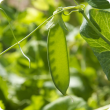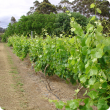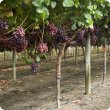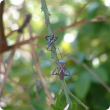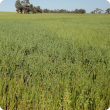Crops
The Department of Primary Industries and Regional Development continues to support the growth and international competitiveness of all crop industries in Western Australia.
With a 2400 kilometre span from its tropical north to its temperate south, WA supports a broad range of cropping industries from rain-fed winter cereals through to irrigated horticultural crops.
In the 2012/13 year the WA cropping industries exported a total of $3.9 billion which comprised: $3.1 billion of cereals, $859 million of pulses, pastures and oilseeds, $142 million of horticultural crops. The major contributors to these exports were wheat ($2.7 billion), canola ($756 million), barley ($377 million), lupins ($42 million), carrots at $48 million, oats ($12 million), and strawberries at $5.5 million.
Filter by search
Filter by topic
- Grains (962) Apply Grains filter
- Pests, weeds & diseases (749) Apply Pests, weeds & diseases filter
- Diseases (503) Apply Diseases filter
- Horticulture (425) Apply Horticulture filter
- Fungi (384) Apply Fungi filter
- Crop diseases (378) Apply Crop diseases filter
- Pulses (309) Apply Pulses filter
- Production & postharvest (291) Apply Production & postharvest filter
- Field peas (284) Apply Field peas filter
- Climate, land & water (241) Apply Climate, land & water filter
- Grains research & development (206) Apply Grains research & development filter
- Canola (202) Apply Canola filter
- Fruit (177) Apply Fruit filter
- Pests (156) Apply Pests filter
- Vegetables (137) Apply Vegetables filter
- Wheat (134) Apply Wheat filter
- Pastures (123) Apply Pastures filter
- Soils (113) Apply Soils filter
- Pest insects (113) Apply Pest insects filter
- Plant nutrition (98) Apply Plant nutrition filter
- Control methods (93) Apply Control methods filter
- Biosecurity & quarantine (86) Apply Biosecurity & quarantine filter
- Livestock & animals (85) Apply Livestock & animals filter
- Lupins (81) Apply Lupins filter
- Chemicals (77) Apply Chemicals filter
- Biosecurity (76) Apply Biosecurity filter
- Barley (74) Apply Barley filter
- Managing soils (73) Apply Managing soils filter
- Plant biosecurity (72) Apply Plant biosecurity filter
- Grapes & wine (64) Apply Grapes & wine filter
- Oats (56) Apply Oats filter
- Weeds (55) Apply Weeds filter
- Sowing (55) Apply Sowing filter
- Land use (54) Apply Land use filter
- Pasture species (53) Apply Pasture species filter
- Climate & weather (53) Apply Climate & weather filter
- Potatoes (52) Apply Potatoes filter
- Crop weeds (46) Apply Crop weeds filter
- Citrus (44) Apply Citrus filter
- Pasture management (42) Apply Pasture management filter
- Herbicides (42) Apply Herbicides filter
- Breeding & varieties (41) Apply Breeding & varieties filter
- Water (39) Apply Water filter
- Irrigated crops (39) Apply Irrigated crops filter
- Fertiliser (38) Apply Fertiliser filter
- Wine grapes (38) Apply Wine grapes filter
- Livestock management (38) Apply Livestock management filter
- Nursery & cutflowers (37) Apply Nursery & cutflowers filter
- Food, export & investment (34) Apply Food, export & investment filter






